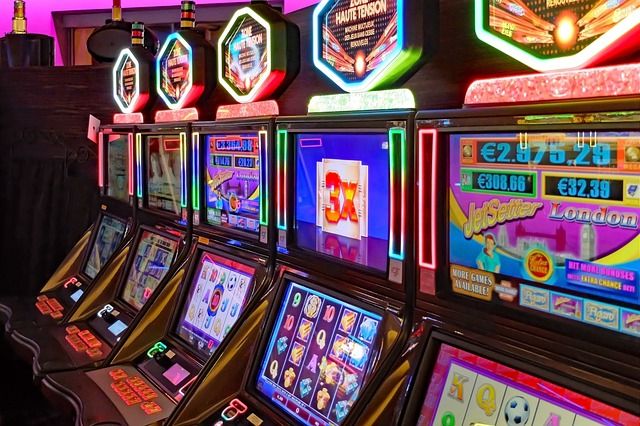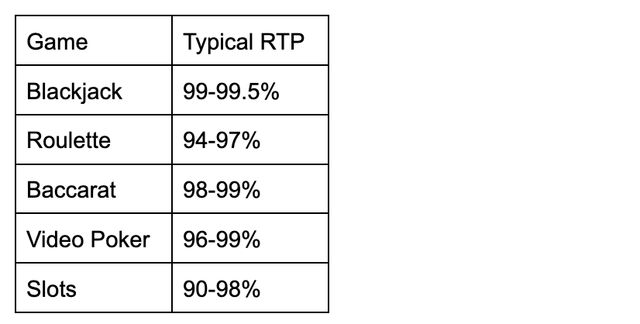Understanding Return to Player (RTP) in Online Casinos
- Category: Pics |
- 20 Dec, 2024 |
- Views: 303 |

Return to Player percentage, commonly known as RTP, is arguably the most crucial statistic for online casino games and understanding how it works. A comprehensive guide to Return to Player (RTP) percentages in Slot Mafia Casino online games and how this vital statistic impacts your chances and payouts when playing slots, roulette, blackjack and more internet gambling favorites.
Return to Player (RTP) refers to the percentage of wagered money a slot machine, table game or other casino game is theoretically expected to pay back to players over time. This number gives players a quick measure for judging games, with higher RTPs signaling better odds and payout potential.
RTP does not mean that you are guaranteed returns in the short run. Rather, it provides a long-term projection grounded in probability and statistics. Just like flipping a coin will not always alternate perfectly between heads and tails in 10 flips, but over 1,000 flips should produce close to 50% heads and 50% tails.
How RTP Works
RTP measures the ratio between player losses and wins over an infinite number of rounds of play. If a game has an RTP of 96%, this means for every $100 wagered cumulatively by players, $96 is returned in winnings while $4 is kept as profit. This includes jackpot wins, which may pay back thousands of times the triggering bet size.
Most regulators require minimum average returns. For example, Nevada mandates 75% minimum RTP on slot machines while New Jersey requires 83%. However, due to intense competition, the vast majority of online slots have RTPs in the 94-98% range.
Table games like blackjack and roulette also have established RTPs based on their rule sets:

As you can see, RTPs can cover a wide spectrum even within game genres. Generally speaking, the more a game relies on skill rather than just chance, the higher its expected RTP.
Understanding Volatility
While RTP indicates overall expected returns, volatility measures how much and how frequently a game pays out. Low volatility games land wins regularly, but the amounts are usually small or medium sized. Playing these slots feels less risky but also less exciting.
Conversely, high volatility games go through longer dry spells but offer bigger payout potential. The wider range between highs and lows makes for a more heart-pounding experience. Neither volatility type is inherently “better.” What matters most is aligning game variance with your bankroll, playing style and entertainment preferences.
Why RTP Matters
RTP directly impacts your bottom line as a player. Every extra percentage point adds more value and reduces the house edge against you.
To demonstrate, let’s compare two theoretical slot machines:
• Slot A has 94% RTP
• Slot B has 96% RTP
Now let’s say we wager $1,000 per spin on each, or $1 million total on each game.
Slot A projected outcome:
• Wagers: $1 million
• Payouts: $940,000
• House Edge: $60,000 (6% advantage)
Slot B projected outcome:
• Wagers: $1 million
• Payouts: $960,000
• House Edge: $40,000 (4% advantage)
The 2% higher RTP on Slot B leads to $20,000 more paid back to us over the lifetime of play compared to Slot A.
While individual session results always vary due to randomness, RTP provides insight into long-term expected outcomes. It converts an intangible concept like volatility into a concrete financial projection grounded in math.
Finding RTPs
Many online slots Konami display or allow sorting games by RTP percentages. If not shown directly, a bit of Googling will typically surface the number. However, RTPs are based on probability over an infinite number of spins. As an individual player, you cannot verify the accuracy during a single session or even over weeks of play.
Reputable developers and casinos rely on RTP consistency for retention. While short-term results fluctuate, over tens of thousands of real world spins games converge closer to their expected returns. No player ever completes “infinity” spins, so posted RTPs require some trust.
Regulators vet and approve RTP percentages before games launch, providing oversight. Additionally, independent auditors often verify and report actual observed payout rates across game libraries. The results generally show strong alignment with stated RTPs.
Table Game Considerations
RTPs also apply for table games, with the added factor of optimal strategy influencing outcomes. For example, blackjack RTPs fall between 99-99.5% when following a perfect basic strategy. However, make poor plays on key hands and that advantage evaporates against the house.
Similarly in video poker, using proper strategy when holding/drawing cards is required to achieve the games’ typical 96-99% RTPs. While slots have fixed programmed RTPs, table games shift based on player decisions within the rules. This puts greater emphasis on skill development.

